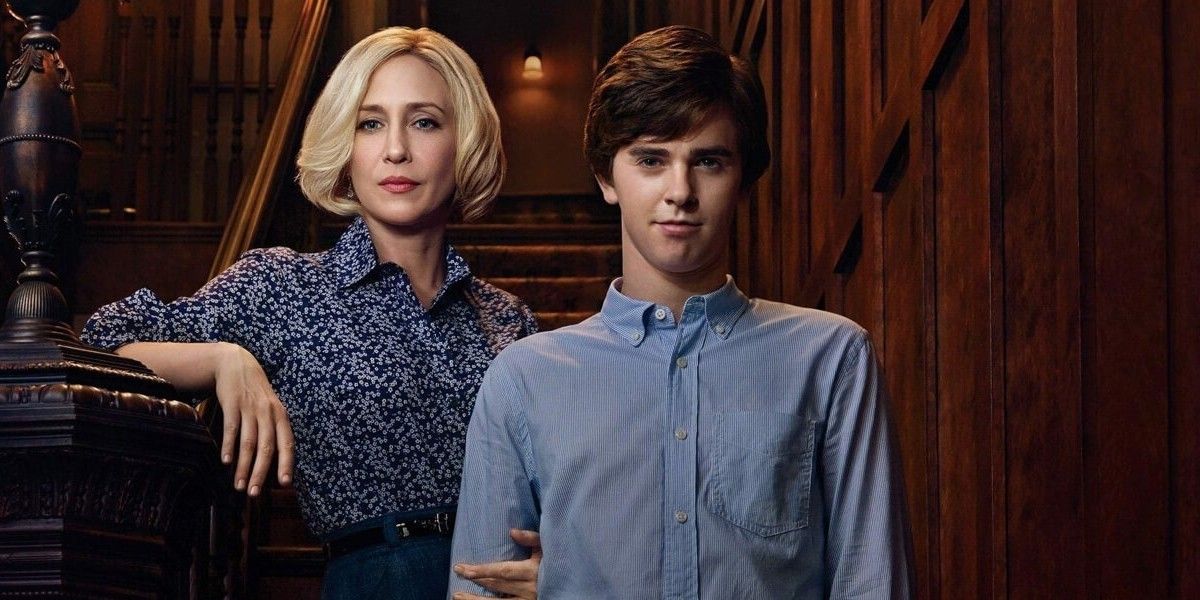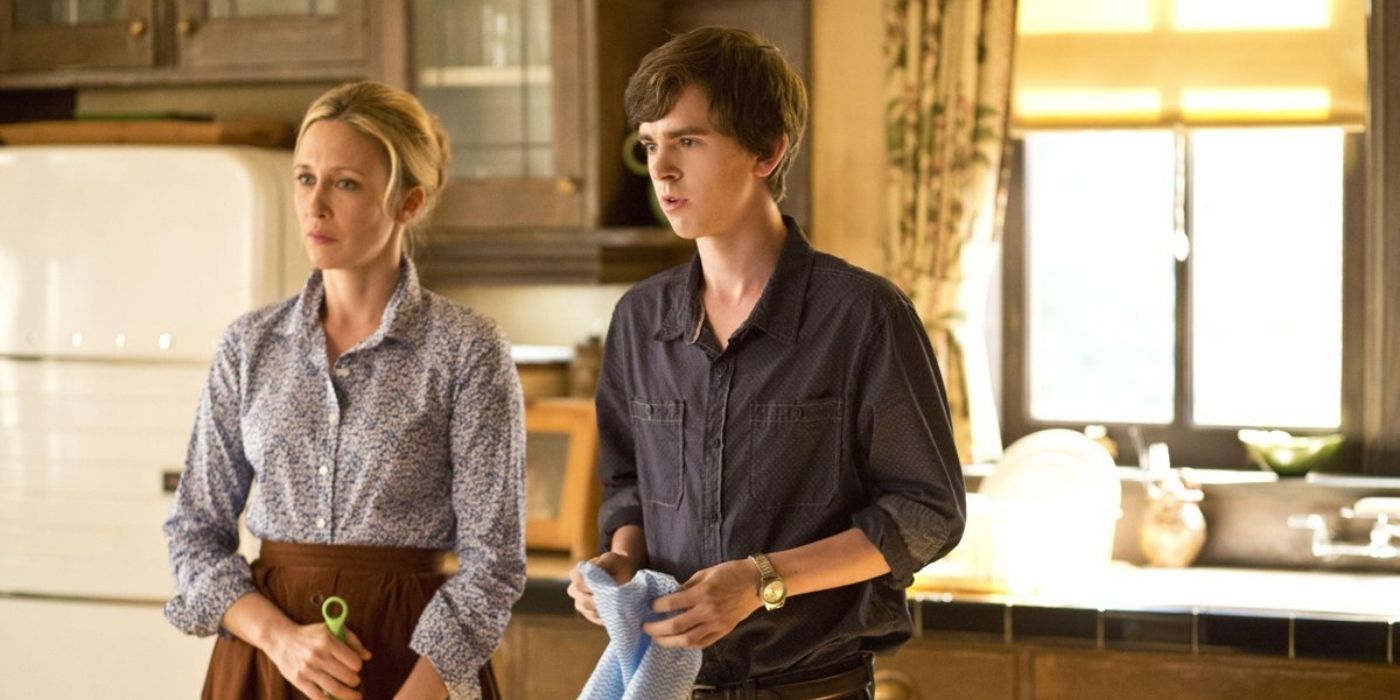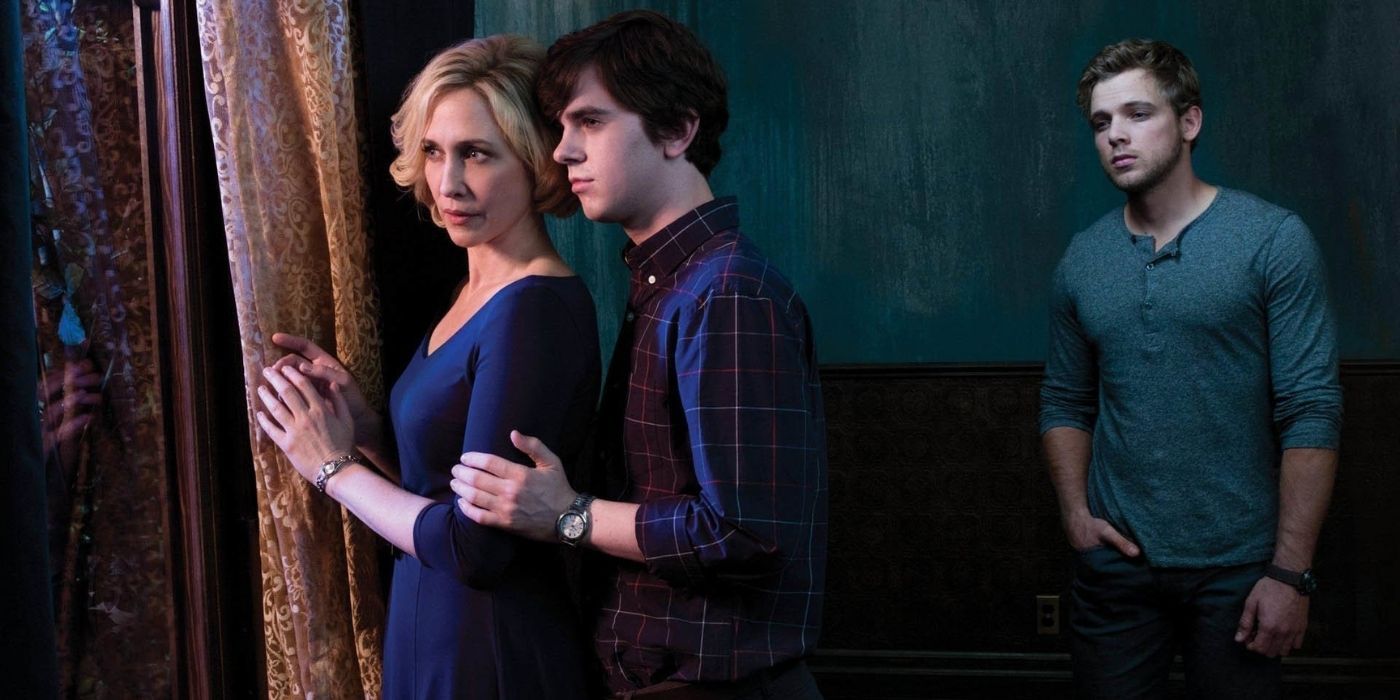
Throughout five seasons, Bates Motel filled in the gaps between Norman Bates' teenage years to the events of Alfred Hitchcock's Psycho, including the iconic shower scene. With few horror shows tackling prequels, it was an exciting premise. Yet some Psycho fans were disheartened by Batel Motel's modern setting, expecting the A&E series to fall in the '60s. However, while the world around the Bates family is contemporary, their home, motel and fashion are almost identical to the film. It was a styling decision used to drive home Bates Motel's twisted theme.
Bates Motel picks up with Norman (Freddie Highmore) and his mother, Norma (Vera Farmiga), starting fresh in Oregon after purchasing the motel. Those familiar with Psycho are immediately greeted with the familiar motel strip and looming Victorian house, lurking atop a set of intimidating-looking stares in the background. The house and motel are almost identical to the film, inside and out. Considering Bates Motel's set was built from scratch in Aldergrove, British Columbia, it was a deliberate decision. In the series, Norma purchases the motel and house with furniture included, explaining its dated appearance.

However, Bates Motel is a contemporary sequel. The cast uses flash drives, cellphones, laptops and drives modern cars. That said, the Bates residence remains untouched by time. There is no current technology in the house, except for Norman and Norma's laptops and cellphones. Unlike the rest of the town, Norma drives a vintage 1970's Mercedes-Benz. Even the duo's fashion feels out of sorts. Norma frequently wears flowered dresses reminiscent of a '50s housewife and never cooks without an apron. The same can be said for Norman, whose out-of-date sweaters closely resemble Anthony Perkins' wardrobe in Psycho.
According to Bates Motel creators Carlton Cuse and Kerry Ehrin, this was no mistake. Moving the story into the present day removes some of the pressure of living in Psycho's massive shadow while giving writers more creative freedom. Aside from the logistics, it also spotlights a critical aspect of Norman and Norma's relationship. While the world grows around them, they remain in their own little bubble. It represents their suffocating, toxic dynamic. They don't want anyone else but each other, so the world left them behind.

With Norman and Norma stuck in the '60s, Bates Motel takes on a unique tone and atmosphere. Their motel, house and clothing aesthetic is symbolic of their isolation. This is why it seems strange when other characters, like leather jacket-wearing Dylan Massett and Sheriff Romero, step into their bubble. The contrast is jolting, just like when Norman -- dressed in his usual outdated sweaters and slacks -- causally plops in earbuds at the bus stop in the pilot episode. As a result, when viewers are with Norman and Norma, they forget about the other characters and what decade it is, just like the mother and son do. As Cuse said to The Take, "When you're in the house and in the motel, you do feel like you're sort of floating in this timelessness, and that was a stylistic choice."
While Psycho fans may have initially been disappointed, Bates Motel's contemporary and period fusion create an intriguing setting. It allows new audiences to jump into the story without a learning curve. At the same time, veterans still get their fill of taxidermy and peep-hole callbacks to Hitchcock's film. By creating a "timeless bubble" around Norman and Norma, Bates Motel really drives home the point that there's something unusual going on with the Bates family.
0 Comments